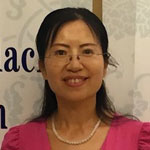Japan’s Foreign Ministry recently posted a color leaflet on its website to preach that Japan ‘enjoys sovereignty’ over the Diaoyu Islands. The pamphlet included a Q&A on the issue, including the following exchange:
Q: Has there ever been an agreement to ‘shelve’ issues relating to the islands?
A: Japan has consistently maintained that there has never been any agreement with China to ‘shelve’ issues regarding the Senkaku Islands. This is made clear by published diplomatic records.The assertion that such an agreement exists directly contradicts China’s own actionsto change the status quo through force or coercion.
This not only denied the consensus of shelving disputes, but also accused China of ‘changing the status quo through force or coercion’. We all know that both China and Japan have shelved the dispute, and there is by no means a Japanese unilateral existence around the waters of Diaoyu Islands.
In 1972, the leaders of China and Japan reached a tacit understanding of shelving the Diaoyu Islands disputes in order to establish a diplomatic relationship. China has the specific record on this point. The motive behind an unclear public diplomatic record of Japan’s Foreign Ministry is not yet known, but the facts cannot be changed. In June 2013, former Chief Cabinet Secretary and LDP secretary-general Hiromu Nonaka said that he had heard from former Prime Minister Tanaka Kakuei that China and Japan once reached an agreement on shelving the disputes over the Diaoyu Islands issue. The former deputy director of Japan’s Foreign Ministry Kuriyama Takakazu, who has participated in preparatory work on the normalization of China-Japan diplomatic relations, expressed in an interview with Tokyo Shimbun that, according to his recollection, Prime Minister Tanaka Kakuei and Premier Zhou Enlai once talked about Diaoyu Islands in Beijing on 27 Sept.1972, and said that ‘I think both sides have reached a tacit understanding on the Senkaku Islands (called the Diaoyu Islands by Chinese). ’
The status quo of the Diaoyu Islands issue has lasted for 40 years under the principle of shelving the dispute, and the China-Japan relationship has also peacefully developed for 40 years. However, after the right-wing governor of Tokyo Shintaro Ishihara threw out the remarks on the ‘purchase’ of Diaoyu Islands in April 2012, the Japanese Government ignored China’s advice and unilaterally abandoned the tacit understanding by both sides, announcing the ‘purchase’ of Diaoyu Islands and the implementation of the so-called nationalization. Japan’s policy on Diaoyu Islands is changing to become a public occupation. After that, China has to strengthen the aeronaval patrol around the Diaoyu Islands by a marine surveillance department. This is nothing less than a counter-measure for Japan’s action to damage the ‘status quo’ of Diaoyu Islands. The damager of the peace at waters of Diaoyu Islands is the government of Japan.
Since the dispute escalation, Japan has feigned weakness and publicly required a high-level dialogue with China, but insisted that ‘three no Principles blocked the process of dialogue under the table. At the same time, under the guise of ‘active pacifism’, Japan promoted constitutional changes in order to take ‘the right of collective self-defense’; set up a NSC mechanism; strengthened the JGSDF Western Army Infantry Regiment; and purchased Global Hawk drones. Active pacifism has changed to active militarism. From 1 Nov. 2013, Japan’s self-defense agency launched a 18 day-long military exercise to seize the island with 34000 soldiers’ in attendance. Everyone knows that this military exercise aimed at Diaoyu Islands, although Japan’s Defense Agency officer repeatedly stressed that the exercise is not directed at any particular adversary. It is clear at a glance who is changing the status quo through force or coercion.
Japan has also strengthened the efforts to intensify the US-Japan Military Alliance and extend the range of US-Japan Security Treaty to the Diaoyu Island and its affiliated islands. Japan is coordinating U.S. forces to strengthen a frontier military deployment; advocating that US and Japan have made the plan to seize Diaoyu Islands; and the US supports its position through its media. But the US seemingly doesn’t want to stand with Japan. Over the weekend, the spokesman of the Pentagon clarified the false report about the US-Japan Common defense program on Diaoyu Islands from ‘Nikon Keizai Shimbun’.
All of the above shows that the media campaign of Japan is inundated with ridiculous rumors, which don’t deserve refuting, but just serve to stir confusion. I hope Japan is not unrepentant or deceptive any more, and that it goes back to the track of dialogue and negotiations earlier to resolve the relevant disputes. If it doesn’t, it will raise more concerns, disgust and vigilance by the Chinese community.
Xue Junying is a Researcher at the US Center of the China Foundation for International Studies.

